Here at Equestrian Boots and Bridles, we want to make buying boots a really enjoyable experience. So we’ve created this guide to help you figure out what you actually need – and cut through what you don’t!
Before we get started, I want to tell you something about my own experience with boots. It’s important for you to know that my ankles are just not naturally flexible. When I was young, “Heels down!” was basically my riding coach’s mantra for years! It’s not that I didn’t try—I really did! But my ankles just wouldn’t bend. Almost 20 years of riding later and I’m still working on my ankles if I’m being honest.
My first pair of riding boots were classic tall English riding boots that looked kind of like this:
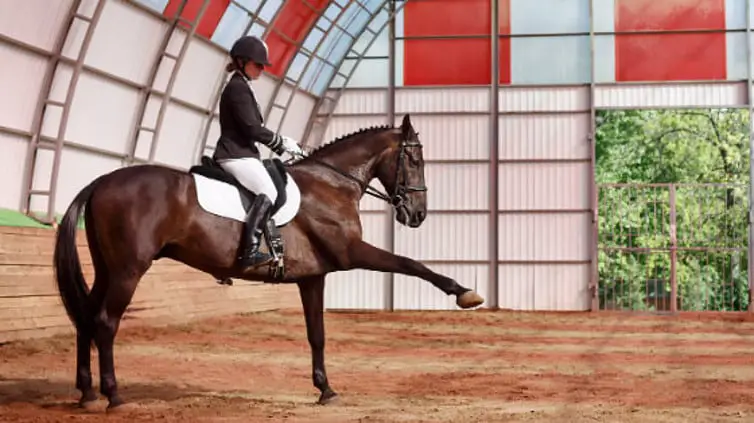
They were SO stiff around my ankles and I didn’t have the strength or flexibility at age eight to bend the thick material.
But once I switched to short boots with half-chaps, it made a world of difference! My ankles had less pressure against them, they got more flexible, and my coach wasn’t yelling at me anymore. (It also was a relief to stop having to get my dad to pull my boots off me after lessons!)
It’s crazy how that one little change made such a big difference in my riding, and it just goes to show how important boot choice is in how much you enjoy riding. Tall English boots might be required for some competitions (jumping, hunting, eventing, dressage, etc.), but if you’re just starting, they might not be necessary yet (even though—I know—they are gorgeous!).
The most important thing is to get boots that are comfortable, safe, and fit your specific riding needs.
Looking for something specific? Skip ahead:
#1. Choosing the Best Boots for Horse Riding
#2. Types of Horse Riding Boots
#5. Best Riding Boots for Beginners
#6. Horse Riding Boot Maintenance
#7. Our Boots Galleries (Shop Our Favourites!)
Can You Wear Normal Boots for Horse Riding?
Having a good pair of proper riding boots is important at every skill level. Not just because they look good, but also for safety reasons.
It might be tempting to just pull out a pair of running shoes or regular boots, especially if you’re heading off to your first lesson, but don’t do that!
You need something with a heel on it so that your foot won’t slip forward into the stirrup. That way if your horse gets spooked and runs off, you won’t get your foot trapped in the stirrup. If you’ve seen Sea Biscuit then you know accidents can happen, even to the most skilled and prepared of us. But it’s much less likely if you dress for success!
(Can you avoid this completely? LeMieux Stirrups have completely changed the game of safety. You can read my review of them here.)
What Are Horse Riding Boots Called?
If you’re new to riding, you may come across a number of different terms and types of boots. In general, they’re just called horse riding boots, horseback riding boots, or equestrian boots.
Then there are different types of boots, which include English boots, Western boots, paddock boots (also known as jodhpur boots), short boots, and tall boots. We have guides to each of those, so just click the link to learn more!
What Are The Best Boots For Horse Riding?
How do I Choose Horse Riding Boots?
Follow these 5 basic rules of horse riding boots to know which ones are best for you:
#1. Safety: This is always key with horses. It’s important to have a healthy respect for your horse and riding.
All boots made for horseback riding will automatically have all the safety features. Horse riding boots should have a good heel so that your foot can’t slip forward into the stirrup:
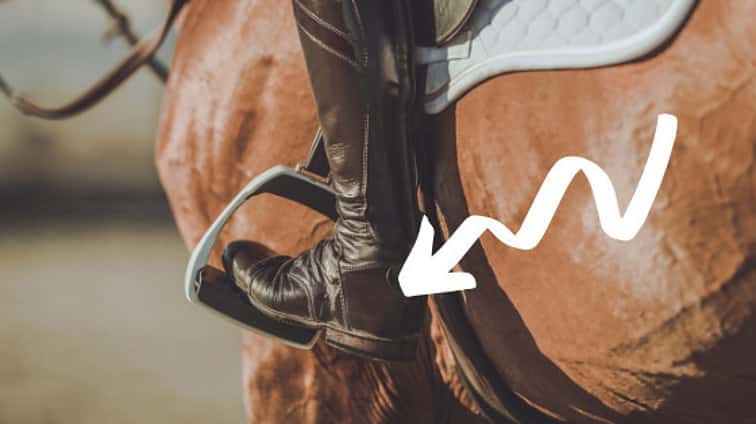
Riding boots should also be closed-toed.
My foot has been stepped on too many times. Huge ouch!
Now imagine hoof on a sandal… yeah, I don’t want to either. Definitely closed-toed is the way to go for horseback riding.
The grip on the sole of your boot should also be good enough that your foot isn’t sliding around everywhere, but not have thick grooves that could get stuck in the stirrup.
#2: Riding Discipline: This is key if you’re planning to compete and therefore have to follow strict guidelines.
Make sure that you know the rules of your competition and get the required type of boots.
For example: Dressage usually requires tall black leather dress boots. You can skip to my breakdown of different kinds of boots here.
It’s also important if you want to look the part when you’re riding!
If you know you’ll be riding Western, then you don’t want to show up with shiny dress boots and even more so vice versa: I would say you definitely don’t want to show up to an English lesson in cowboy boots.
Jumping and dressage involved a lot of communication between the horse’s sides and your whole lower half – everything from your hips to your heels.
This is much simpler in English riding boots.
Western riding is all about comfort. It’s built around riding for days at a time and is perfect for ranchers. Western horses are trained to run with the slightest bit of leg.
You don’t need all the fine control with them so looser fitting, more casual (and much more durable) western boots work well:
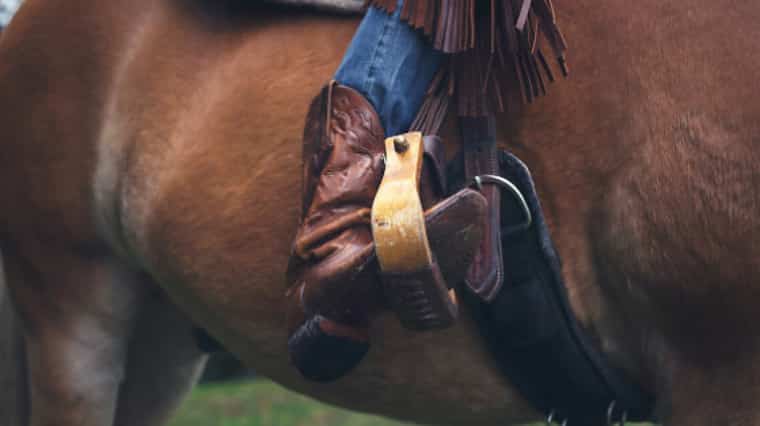
More of an occasional rider?
If you’re looking for casual boots rather than authentic equestrian boots, check out this post on cute women’s boots that can be worn riding.
#3: Budget: You want to have an idea of how much you’re willing to spend before you go out and start looking becuase you’ll almost certainly get carried away…or maybe that’s just me?
I love the look of riding boots because I think they make my legs look longer and nicer. The more expensive they get, the more I seem to like them… So I have to be strict with myself.
For beginners, I would say a budget of under $150 is a good place to start. As for how to spend that $150, stick with short boots if you’re riding English.
We’ll talk about the difference between short and tall English boots just a little bit lower down in this post.
#4: Material: If you’re somewhere like Arizona, you need something breathable so you should avoid rubber at all costs. You can get horseback riding boots made of rubber that are cheaper but they have zero breathability.
If you’re further north, somewhere like Ontario, and you ride through the winter than you need to make sure you’re getting a boot big enough to fit some thick socks.
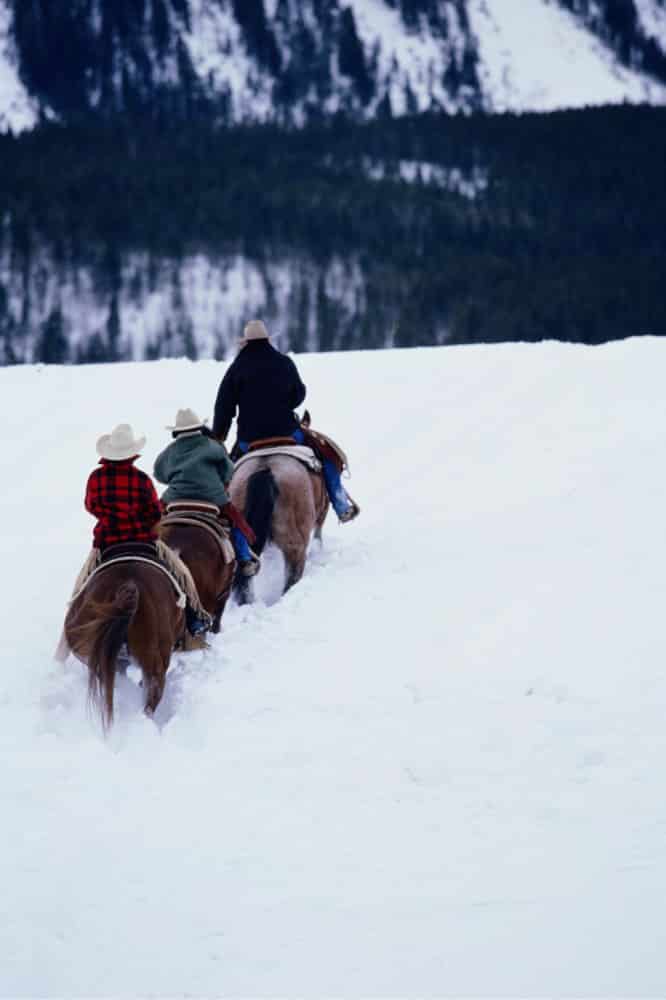
If you’re out in the fields rounding up your horse or doing chores as well as riding, you need to make sure your boot is 100% waterproof. For that reason you might want to avoid laces.
#5: Style: There are 2 major styles in horseback riding – English and Western.
English riding includes events such as jumping, hunting, eventing and dressage. Boots are classically fitted and black leather. They are made to allow for very fine communication between you and the horse using your legs.
Within English, there are tall boots and short boots and then a lot of variation within those. We’ll go over each of those next.
Western riding includes events such as roping, reining and all other rodeo events. Cowboy boots are used because they’re durable, comfortable and versatile for ranching.
The style and substyles that you choose depend a lot on what kind of riding you’ll be doing. If you want to learn more about English and Western riding, I have a full blog post on the differences here!
Types of Horse Riding Boots – The Master List
I started out riding English so I’ll start with English boots first.
English Riding Boots
We’ve now talked about short and long English riding boots a few times. Now I think we should go over that in more detail.
English Riding Boots: Are Short or Long Riding Boots Better?
If you’ve decided to ride English, the decision between short or long boots really comes down to one question. Is your goal to compete in English riding events?
If so, take the time to go through the dress code for the event you’re competing in. More than likely, you’ll need to get tall boots. This isn’t always the case, especially with young riders, but as the level increases, the formality does too.
This is why I started off with tall boots – I knew I wanted to compete and I didn’t want to invest in more than one pair of boots initially.
For me this didn’t end up working because of my inflexible ankles. So I got short boots with half chaps for training and then a pair of tall dress boots for competitions.
If you get the right pair of tall boots (and have more flexible ankles than me!), then you can probably just get away with one pair for a while.
Competitions (and of course safety) are the main restriction on which type of English boots you can buy. After that, it comes down to the other 3 things: budget, material and style.
Long boots are not generally better than short boots or vice versa. They both have strengths and weaknesses.
Alright! With that disclaimer out of the way, let’s talk about the individual types of boots.
Long Riding Boots (Tall Riding Boots)
My very first type of boot! And one that you’ll most certainly need at some point if you’re riding English and competing.
The distiguishing feature is that long boots are, well, long. They’re also called tall riding boots.
You can get ones that are pull on, which are traditionally how long boots are made, or you can get ones with a zipper at the back that’s hidden.
There are 3 classic sub-types of long riding boots: the field boot, the dress boot and the hunt boot.
1) The Field Boot
Field boots have a lace-up closure at the front of the ankle for the same reason I was telling you my ankle story.
If you’ve got stiff ankles but you need a tall boot, then this is the way to go.
Field boots are used a lot in jumping disciplines like show jumping, eventing and hunting because they’re easier on the ankles.
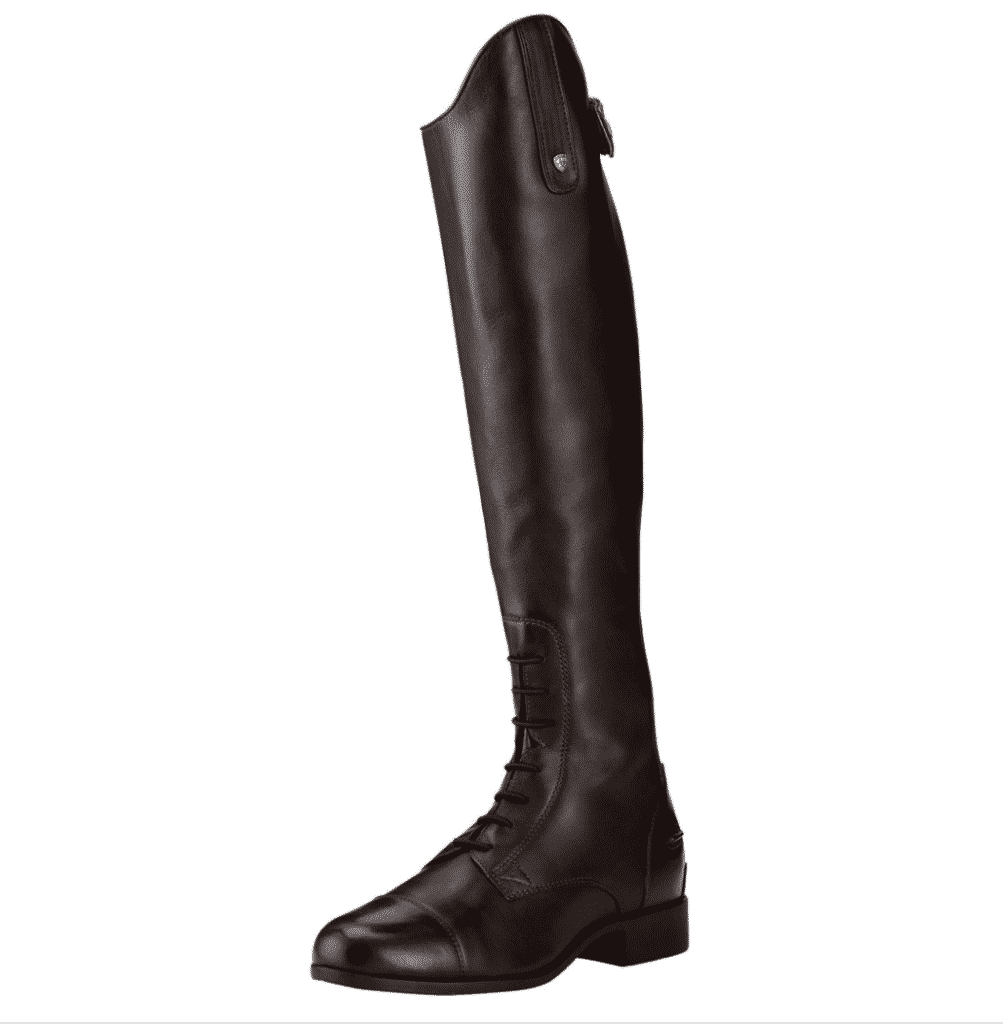
The further down you can push those heels and dorsiflex your ankles (think opposite of a ballerina) the more stable you’ll be while riding. You’ll also be able to shock absorb much more effectively when jumping.
The laces make sure there is give in the material of the boot to allow for significantly more bend at the ankle joint and makes it easier on you!
The Downsides to Field Boots
Unfortunately there are two drawbacks to wearing field boots. The first is that depending on the level and location that you’re competing, field boots may or may not be accepted. Some competitions only allow dress boots.
The second, to me, is more important. I don’t know if you’ve seen the meme floating around Pinterest of the man covered in mud head to toe being on the farm in the Spring? That is exactly what Southern Ontario is like in the Spring.
If you want multi-tasking boots, laces are usually not good for a lot of mud.
Double and then triple check to make sure those bad boys are waterproof otherwise you’ll have mud in your boots the whole time after you bring your horse in from the fields during your lesson.
2) The Dress Boot
Dress boots are THE boot to have at high level competition. They’re stiff, they’re fancy, they’re form-fitting and they’re traditionally slick black and made of fine leather.
You can find dress boots now in synthetic materials and even rubber to cut down the cost on them.
The thing is, if you don’t absolutely need dress boots for competing, I wouldn’t get them.
When I did buy dress boots for competing, I splurged on the expensive leather ones and they’ve lasted me a decade. I would highly recommend you do the same.

Like I said above, rubber is a huge no for me and riding. If you’ve ever owned a pair of rubber rain boots you’ll totally understand why. Rubber doesn’t breathe at all and makes your feet super sweaty! Imagine riding on a hot day now…
Ugh – it’s the worst!
Steer clear of rubber boots would be my advice in general.
Synthetic fabric is another alternative that is better than rubber for sure, but it’s not going to look as nice in competition.
The Spanish Cut
Dress boots have a variation to them called the ‘spanish cut’ when the outside of the boot comes up higher on the outside of the rider’s knee.
This is meant to make your legs look even nicer and longer.
I mean if you didn’t think horse back riding was for you already – don’t you now?
3) The Hunt Boot
Hunt boots are essentially dress boots that are made for men doing hunting events.
They have a cuff at the top of the boot, which is their distinguishing feature.
CHECK OUT OUR TALL BOOT GALLERY:
Short Riding Boots
Short boots are generally cut off at the ankle. They’re also traditionally made of leather but nowadays you can get them in synthetic and rubber materials as well to cut costs.
Short boots are overall significantly cheaper than long boots.
Jodhpur Boots and Paddock Boots: What is the difference between riding boots and paddock boots?
Classically and especially in the UK, there are 2 types of short riding boots: short jodhpur boots and paddock boots.
Short jodhpur boots are meant for riding, whereas paddock boots are meant for work in the field and aren’t really meant for riding.
Personally, I don’t find that there is much of a difference and I refer to all short boots as “paddock boots”. You’ll find that a lot of brands do the same. One of my favourite riding boot brands, Ariat, refers to virually all of their short boots as paddock boots.
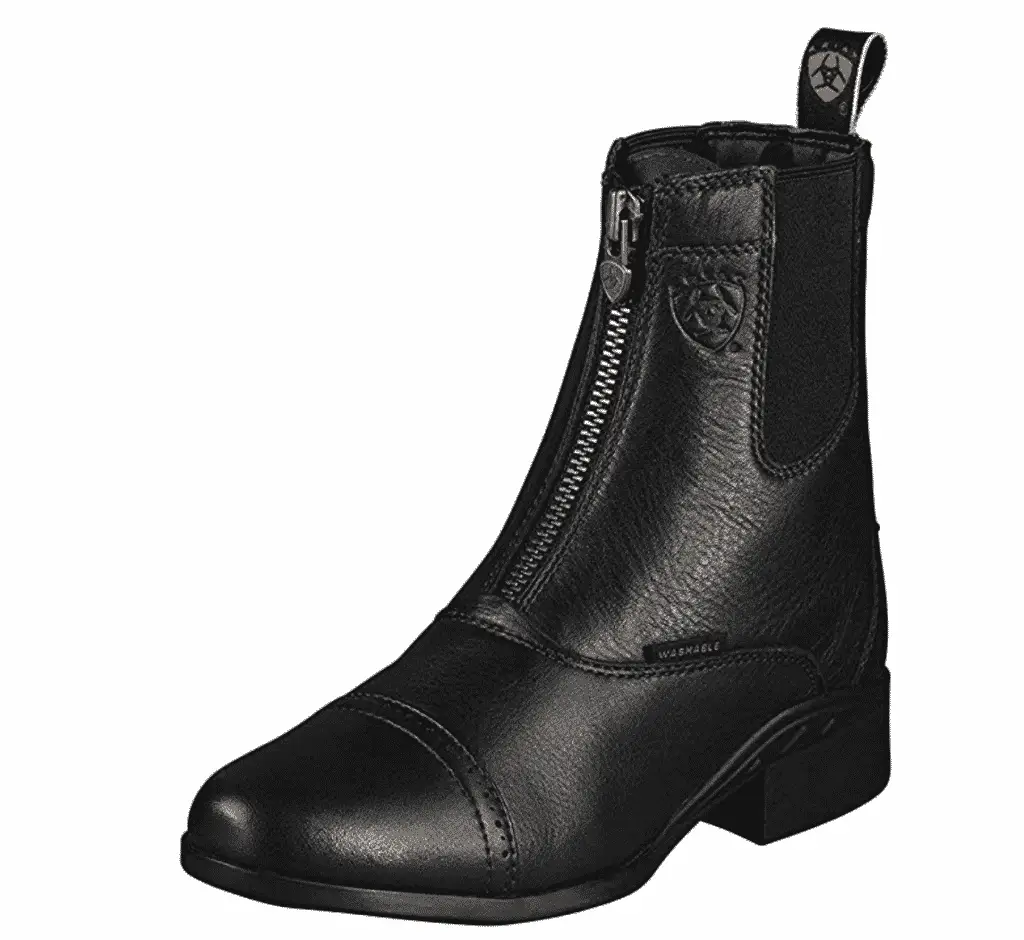
As with everything riding boot related, the only time it really makes a difference is in competition.
Things to look out for!
Short boots are meant to be waterproof, although you have to be careful with laces because that’s not always the case. Furthermore, a lot of them have protective steel toe caps (remember what I told you about hoofs stepping on your feet – this comes in handy!) and they’re made to be comfortable.
CHECK OUT OUR SHORT BOOT (+ HALF CHAPS) GALLERY:
In order to mimic the look of the long boot but also to help with riding stability and comfort, you can pair a short boot with a half chap or gaiter. This is usually required for competition if short boots are allowed.
The Difference Between Gaiters and Chaps
Mostly it’s for competitions that you need to worry about the difference – gaiters are allowed in some competitions, whereas half chaps are not.
Gaiters are built to look sleeker, more fitted, are generally made of leather and really aim to mimic the look of a long boot. They come in black or brown (black is safest to make sure you’re complying with competition rules).
Gaiters can also have the spanish cut where they’re longer on the outside of the rider’s leg.
Half chaps are more casual, and come in different colours and materials. Generally you’ll find them in suede or synthetic materials.
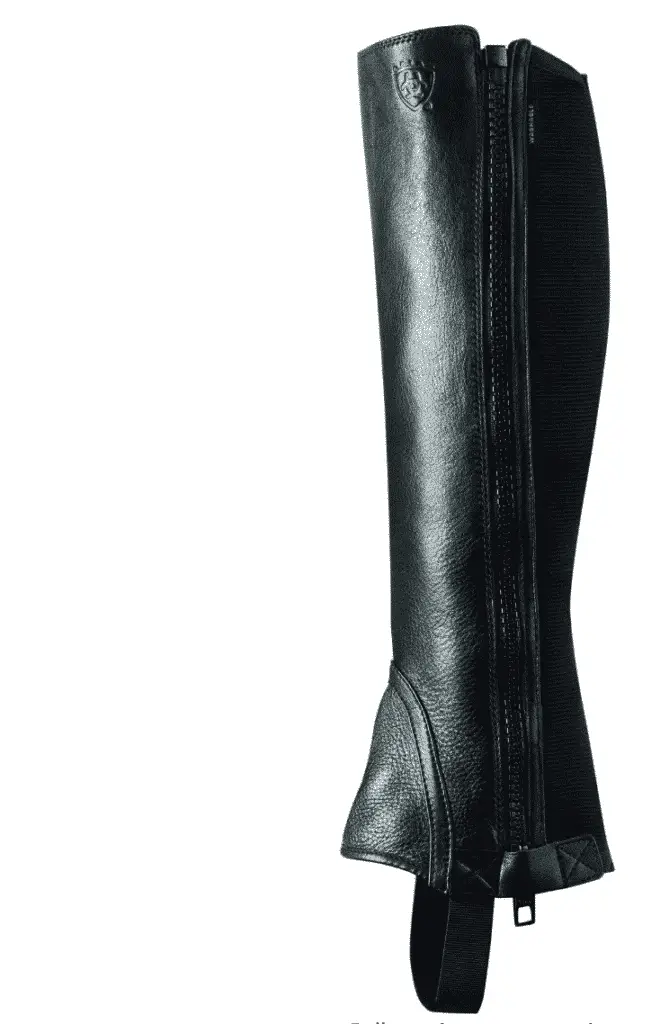
They’ll have more detailing to them, more padding on the inside of the leg and they’ll have some elastic panels.
If you’re getting half chaps just for riding, I would recommend that you get synthetic ones that you can throw in the washing mashine. It makes a huge difference! Especially if you have kids and multiple pairs.
MORE ON PICKING THE BEST ENGLISH RIDING BOOTS:
Learn more about picking the best English riding boots:
WESTERN RIDING BOOTS
Western boots or cowboy/cowgirl boots are simpler in the sense that you don’t need to make sure you have the “right ones”. As long as they’re some sort of authentic Western riding boot, you’re good for any rodeo event that you’d like to compete in.
When it comes to Western boots, you basically want to make sure that they’re real leather and that they’re comfortable.
Most western boots will be super comfortable once they’re broken in, but there are certain brands to steer clear of because breaking them in can mean tons of blisters.
MORE ON PICKING THE BEST WESTERN RIDING BOOTS:
Learn more about picking the best Western riding boots for yourself…
There are many different variations in terms of the embroidering patterns and various glitz and glam aspects but as far as I know, they’re all pretty similar.
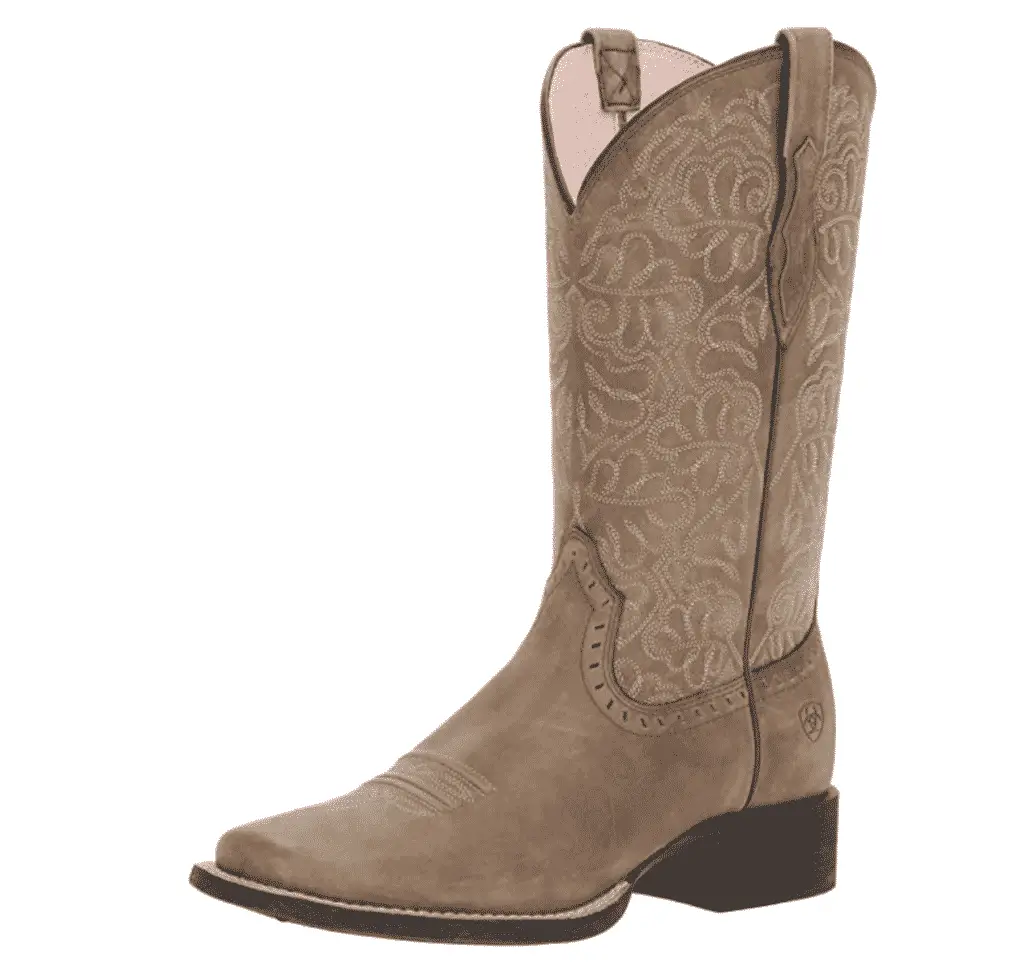
You can get various heights and the toe can either be quite pointed or more round.
In terms of rodeo competitions, there aren’t really any sort of rules or regulations so it’s really just up to what you like best!
In our gallery, you can check out our personal favourites…
CHECK OUT OUR WESTERN BOOT GALLERY:
Ariat Riding Boots : The Perfect Boots for Beginners
Whether you’re looking for English or Western boots, these bad boys have it all and they’re amazing for beginners.
I’m giving these a special section because they’re what I call the “bread and butter” of riding boots – basically a staple.
They are the perfect boots for beginners because they’re comfortable, durable and affordable.
I still use them today and I’ve been riding for almost 20 years! So they’re also great for more advanced riders.
My favourite pair of short boots and half chaps that I do a lot of training and field work in are both Ariat. The half chaps are newer but the boots themselves have lasted me over 8 years now!
My first pair of riding boots were Ariat, and they’re also the brand that I have the most of (I have wayyy to many riding boots though).
Ariat English Riding Boots:
Ariat Western Riding Boots:
How Much Do Horse Riding Boots Cost?
Horse Riding Boot Maintenance
Leather boots require good maintenance.
Yes exactly – the kind that everyone talks about but hates doing.
If you get synthetic, you can usually just use water and some mild soap to clean them. You can also throw them in the wash.
If you’re serious about horses, it’s worthwhile to get a good leather cleaner. You’ll need it for your good boots and also for your tack.
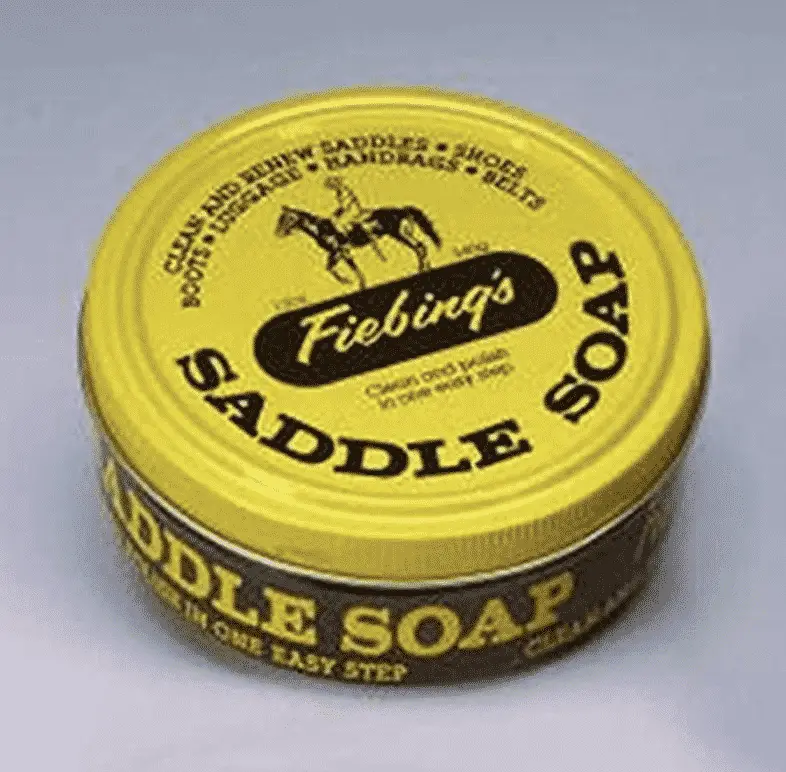
First step is to keep your leather from sitting out in direct sunlight as this will age it faster than anything.
Next, just keeping it relatively clean can make a big difference (yes, that means wiping the chunks of mud off when it’s gross outside).
Every once in a while, you’ll want to actually clean the leather off with a leather cleaner. Most places will try to sell you on fancy leather boot cleaning products. Personally, I hate this.
Over the years, I’ve accumulated like 10-15 products in my mudroom for boots and shoes that I never use and just accumulate dust.
What I’ve found works the best for leather anything (boots, purses, saddles, bridles, etc.) is a good quality saddle soap.
My favourite hard soap is Feibing’s and my favourite liquid soap is Farnam’s. I have both depending on how lazy I’m feeling.
You could also use boot shapers to keep your boots upright so they don’t get those creases from bending over. I have a pair of boots I spent over $600 on that are my favourites and if I was to do this with any of my boots, it would be these. I’m just too lazy – I know, I know, it’s so bad!
I hope you’ve enjoyed this ultimate guide to horse riding boots! Have a look at our boot galleries below for more inspiration.
OUR BOOT GALLERIES….
Please feel free to comment below with any questions.
Happy riding!
Liked this post? Why not pin it!
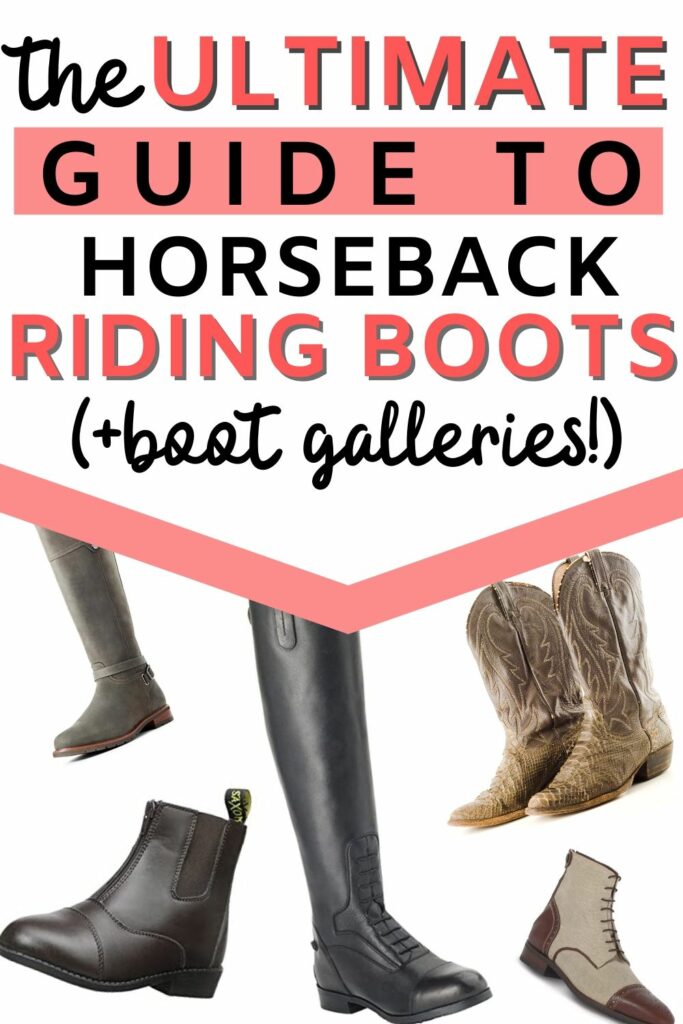

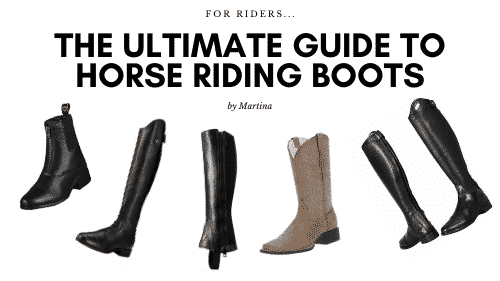
I feel like your introduction is very confusing because you shouldn’t have worn tall boots as a child.
Hi Alexandra,
Lol yeah probably not.
I was about 8 when I got my first pair of riding boots (before that I rode with any shoes I could find with some sort of a heel) and they were definitely tall riding boots and super stiff!
I should have gotten paddock boots or something similar at that age but my parents didn’t know anything about horses so that’s what we ended up buying. Lots of young riders do wear tall boots to competitions though? I personally agree with you in that I don’t think it’s necessary or practical.
Hope that clears things up?
I love this blog post! I’m a beginner rider and I’m looking for the best horse riding boots for me. This post has everything I need to know!
I love this blog! I’m a beginner rider and I’m looking for some good advice on horse riding boots. This post has been really helpful!